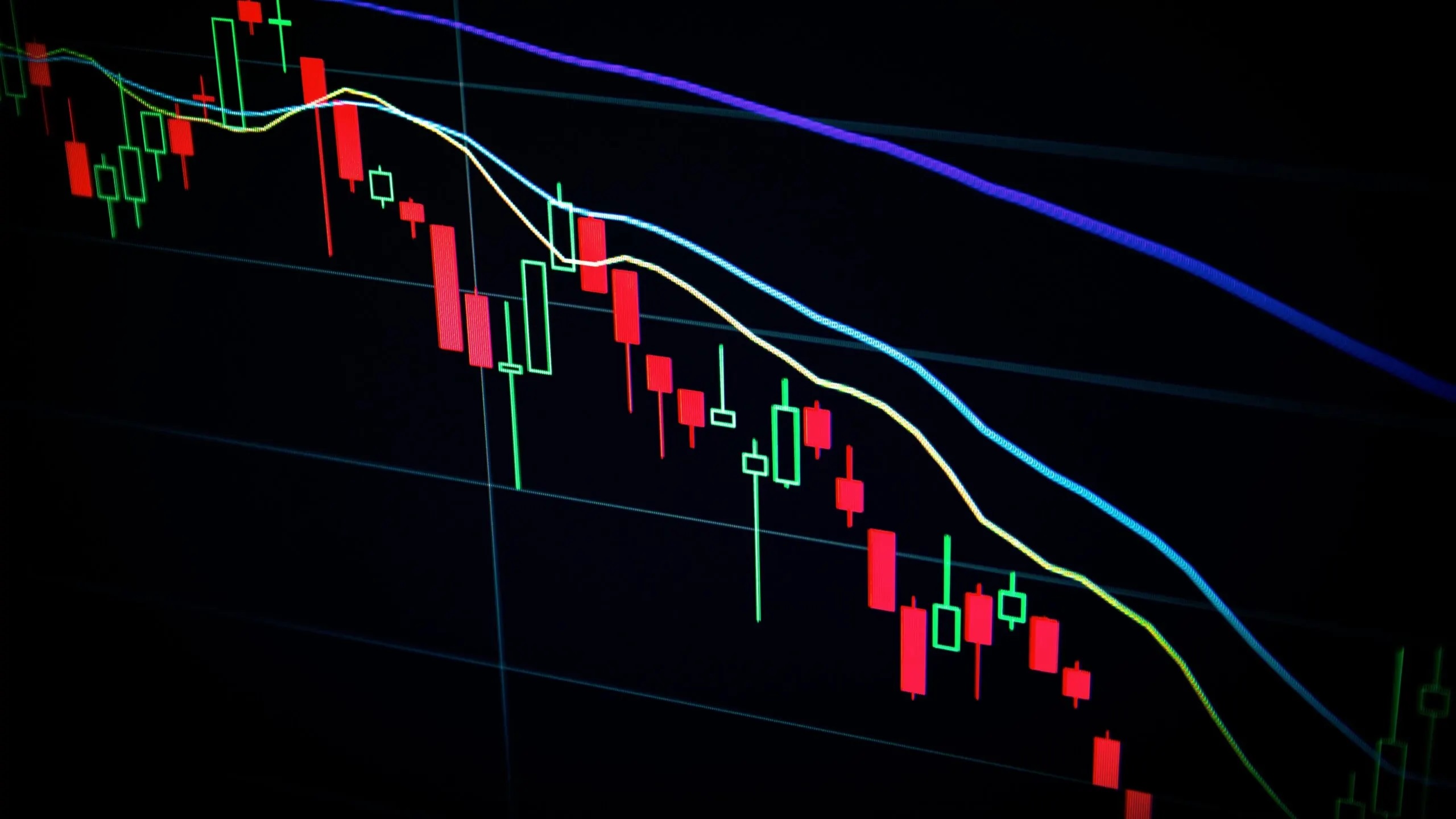

Finance
What Affects The Value Of Cryptocurrency
Published: October 5, 2023
Looking to understand what affects the value of cryptocurrency? Explore the various financial factors that play a role in determining the worth of digital currencies.
(Many of the links in this article redirect to a specific reviewed product. Your purchase of these products through affiliate links helps to generate commission for LiveWell, at no extra cost. Learn more)
Table of Contents
Introduction
Cryptocurrency has rapidly emerged as a popular form of digital currency in recent years. In its essence, cryptocurrency is a decentralized and secure method of conducting financial transactions using cryptography. With the rise of cryptocurrencies like Bitcoin, Ethereum, and Ripple, there has been a surge in interest and investment in this new financial ecosystem. However, the value of cryptocurrencies is subject to various influencing factors that determine their worth in the market.
Understanding the factors that affect the value of cryptocurrency is crucial for investors, traders, and enthusiasts alike. From market conditions to technological advancements, the value of digital assets can be influenced by a wide range of determinants. By examining and analyzing these factors, one can gain insights into the dynamics of the cryptocurrency market and potentially make informed investment decisions.
In this article, we will explore some of the key factors that affect the value of cryptocurrency. By delving into aspects such as demand and adoption, market conditions, regulatory factors, technology and innovation, security, economic and financial conditions, investor sentiment, and supply and distribution, we can gain a holistic understanding of how these factors shape the value of cryptocurrencies.
It is important to note that the cryptocurrency market is highly volatile and subject to rapid fluctuations. The value of cryptocurrencies can soar to unprecedented heights or crash suddenly, influenced by a complex interplay of these factors. As such, it is essential to conduct thorough research and stay updated on the latest developments when participating in cryptocurrency-related activities.
Now, let’s delve into each of these factors in more detail to gain a comprehensive understanding of what affects the value of cryptocurrency.
Demand and Adoption
One of the primary factors influencing the value of cryptocurrency is the level of demand and adoption. The more people and businesses using a particular cryptocurrency, the higher its value tends to be.
Increased demand for a cryptocurrency can come from various sources. One significant driver of demand is user trust and confidence in the technology and its potential benefits. As more individuals and businesses recognize the advantages of using cryptocurrencies, such as faster and cheaper transactions, decentralized control, and increased privacy, the demand for these digital assets rises.
Additionally, the level of adoption of a cryptocurrency plays a crucial role in determining its value. If a cryptocurrency is widely accepted and integrated into various industries and sectors, it will likely have a higher value. As more merchants, service providers, and even governments accept and support a particular cryptocurrency, it strengthens its credibility and creates an ecosystem of users and believers.
Furthermore, geopolitical factors and economic instability can also impact the demand for cryptocurrencies. In countries facing hyperinflation or restrictions on traditional financial systems, people may turn to cryptocurrencies as a means of preserving their wealth or conducting transactions. These factors, along with other external events like political or economic crises, can significantly influence the demand for and value of cryptocurrency.
It is worth noting that the perception of a cryptocurrency’s value can also shape its demand. Positive media coverage, endorsements from influential figures, and successful use cases can instill confidence and attract more users, leading to increased demand and subsequently driving up the value.
However, it is important to recognize that demand and adoption are not stable or linear factors. They can fluctuate rapidly, influenced by various external and internal factors. Therefore, staying informed about market trends, monitoring adoption rates, and assessing the overall sentiment towards a cryptocurrency is crucial when evaluating its value.
Market Conditions and Trends
The value of cryptocurrencies is heavily influenced by market conditions and trends. Just like traditional financial markets, the cryptocurrency market experiences periods of volatility, speculation, and trends that can impact the value of digital assets.
Market conditions, such as supply and demand dynamics, trading volume, and price trends, can have a significant impact on the value of cryptocurrencies. When there is a high demand and limited supply for a particular cryptocurrency, its value tends to rise. Conversely, if there is a surplus of supply or a decline in demand, the value may decrease.
Furthermore, market sentiment can play a crucial role in determining the value of cryptocurrencies. If investors are optimistic and positive about the future prospects of a particular cryptocurrency, it can drive up its price. On the other hand, if there is widespread negative sentiment or skepticism, it can lead to a decline in value.
Trends in the cryptocurrency market can also shape the value of digital assets. For example, the emergence of new technologies or innovative blockchain projects can generate excitement and attract investors, potentially increasing the value of cryptocurrencies associated with these trends. On the other hand, negative news or regulatory actions related to cryptocurrencies can cause panic and lead to a decrease in value.
Additionally, factors such as market manipulation, large-scale investments from institutional players, and the emergence of new trading platforms or exchanges can all contribute to market conditions and trends that affect the value of cryptocurrencies.
It is crucial for investors to stay informed and monitor market conditions and trends when evaluating the value of cryptocurrencies. Analyzing historical data, tracking trading volume and price movements, and following news and industry developments can provide valuable insights that can help investors make more informed decisions.
Regulatory Factors
Regulatory factors play a significant role in shaping the value of cryptocurrencies. As the cryptocurrency market continues to evolve, governments around the world are introducing regulations and guidelines to manage the use and exchange of digital assets.
Regulatory actions can have both positive and negative impacts on the value of cryptocurrencies. On the positive side, clear and supportive regulations can provide a framework that encourages widespread adoption and investment in cryptocurrencies. When governments create an environment that fosters innovation, protects investors, and ensures the security of transactions, it boosts confidence in cryptocurrencies and drives their value up.
However, inconsistent or restrictive regulations can have adverse effects on the value of cryptocurrencies. Negative regulatory actions, such as bans, restrictions, or excessive regulations, can create uncertainty and hinder the growth of the cryptocurrency market. Investors may become hesitant to participate, and businesses may face obstacles in using cryptocurrencies, leading to a decrease in demand and value.
It is important to note that regulatory approaches towards cryptocurrencies vary significantly from country to country. Some nations have embraced cryptocurrencies and blockchain technology with open arms, while others have taken a more cautious or even hostile stance. Changes in regulations, both at the national and international levels, can have a substantial impact on market sentiment and the value of cryptocurrencies.
Moreover, investor protection and anti-money laundering efforts by regulatory bodies also influence the perception and value of cryptocurrencies. When there are strong measures in place to combat fraud, scams, and illicit activities in the cryptocurrency space, it instills confidence in investors and enhances the perceived value of digital assets.
Therefore, investors and cryptocurrency enthusiasts should closely monitor regulatory developments and their potential implications. Being aware of changes in regulations, compliance requirements, and government attitudes towards cryptocurrencies is crucial in understanding the value dynamics of digital assets.
Technology and Innovation
The value of cryptocurrencies is closely tied to the underlying technology and the level of innovation within the cryptocurrency ecosystem. Advancements in technology and the development of new features or applications can significantly impact the value of digital assets.
One of the key technological factors influencing the value of cryptocurrencies is the scalability and efficiency of the blockchain network. If a cryptocurrency’s blockchain can process a higher volume of transactions quickly and at a lower cost, it enhances its value and usability. Scalability solutions, such as the Lightning Network for Bitcoin, can significantly improve transaction speeds and reduce fees, making the cryptocurrency more appealing to users and investors.
In addition to scalability, technical developments related to security and privacy can also impact cryptocurrency value. If a cryptocurrency utilizes advanced encryption methods, smart contract functionality, or innovative privacy features, it can enhance its attractiveness to users concerned about privacy and security. Technologies such as zk-SNARKs and zero-knowledge proofs have the potential to revolutionize privacy-preserving transactions and elevate the value of cryptocurrencies that incorporate these features.
Furthermore, innovation in the cryptocurrency sector plays a crucial role in determining value. The emergence of new use cases, applications, or decentralized finance (DeFi) platforms can generate excitement and drive up the value of associated cryptocurrencies. For example, the development of decentralized exchanges, lending platforms, or tokenized assets expands the utility and potential of cryptocurrencies, attracting more users and investors.
Integration with emerging technologies, such as artificial intelligence, Internet of Things (IoT), or blockchain interoperability, can also influence the value of cryptocurrencies. Collaborations and partnerships between cryptocurrency projects and established technology companies or industries can create new opportunities and increase the perceived value of the cryptocurrency.
Investors and market participants should closely monitor technological developments and innovation within the cryptocurrency ecosystem. Analyzing the technological capabilities, features, and potential use cases of a cryptocurrency can provide insights into its value proposition and growth potential.
Security and Hacking Incidents
The security of cryptocurrencies and the occurrence of hacking incidents can have a significant impact on their value. As cryptocurrencies are based on decentralized blockchain technology, their security is paramount to maintain user trust and confidence.
Instances of hacking or security breaches can shake investor confidence and lead to a decline in the value of cryptocurrencies. High-profile hacking incidents, such as the notorious Mt. Gox exchange hack, have resulted in substantial losses for users and negatively affected the perception of cryptocurrency security.
Therefore, the level of security measures implemented by cryptocurrency platforms and exchanges is a crucial factor that investors consider when evaluating the value of a cryptocurrency. Robust security practices, including two-factor authentication, multi-signature wallets, cold storage, and regular security audits, enhance the overall trustworthiness and perceived value of a cryptocurrency.
Furthermore, the development and adoption of additional security measures, such as decentralized identification systems and secure smart contract protocols, can help protect against potential vulnerabilities and increase the value of cryptocurrencies. Projects that focus on improving security infrastructure within the cryptocurrency ecosystem are likely to gain favor among investors and drive up the value of their associated cryptocurrencies.
It is worth noting that the cryptocurrency community response to security incidents is also a significant determinant of value. How efficiently and transparently a security breach is handled, the compensation provided to affected users, and the steps taken to prevent future incidents can impact investor sentiment and restore trust in the cryptocurrency ecosystem.
Regular monitoring of security practices and staying informed about potential vulnerabilities or hacking attempts are essential for investors and users of cryptocurrencies. It is advisable to choose reputable platforms and exchanges with a strong security track record to reduce the risk of financial losses and protect investments.
Economic and Financial Factors
Economic and financial factors play a significant role in determining the value of cryptocurrencies. The global economic climate, monetary policies, inflation rates, and the overall health of financial markets can all have an impact on the value of digital assets.
One important factor to consider is the correlation between cryptocurrencies and traditional financial markets. Cryptocurrencies are often perceived as an alternative investment or a hedge against traditional assets, such as stocks or fiat currencies. During times of economic uncertainty or market volatility, investors may turn to cryptocurrencies, increasing their demand and subsequently driving up their value.
Additionally, economic indicators such as GDP growth, unemployment rates, and interest rates can also influence the value of cryptocurrencies. Positive economic indicators and a strong overall economy can create a favorable environment for cryptocurrencies, attracting more investors and potentially driving up their value.
Inflation rates and the stability of fiat currencies also have an impact on the value of cryptocurrencies. When traditional currencies experience high inflation rates or political instability, individuals may seek to diversify their holdings by investing in cryptocurrencies as a store of value. This increased demand can contribute to the appreciation of digital assets.
Furthermore, macroeconomic policies and regulations related to cryptocurrencies can significantly affect their value. Measures such as capital controls, tax policies, and government initiatives to support or restrict the use of cryptocurrencies can shape market sentiment and impact the overall value of digital assets.
It is important for investors to stay informed about economic trends, monetary policies, and financial market conditions when evaluating the value of cryptocurrencies. Understanding these factors and their potential impact can help investors make more informed decisions and manage their cryptocurrency investments strategically.
Investor Sentiment and Speculation
Investor sentiment and speculation are powerful forces that can significantly impact the value of cryptocurrencies. The perception and psychological factors surrounding digital assets can often play a crucial role in their value.
Investor sentiment refers to the overall attitude and feelings of investors towards a particular cryptocurrency or the market as a whole. Positive sentiment can create a bullish outlook, leading to increased demand and potentially driving up the value of cryptocurrencies. Conversely, negative sentiment can create a bearish sentiment, causing a decrease in demand and value.
Speculation, on the other hand, involves investors making bets on the future value of cryptocurrencies. Speculative activity can result in rapid price fluctuations, as investors buy and sell based on anticipated price movements. Speculation is fueled by market trends, media coverage, and even social media chatter, leading to short-term volatility.
The value of cryptocurrencies is often influenced by speculative bubbles, where prices soar to unsustainable levels based on hype and excitement. However, when speculative bubbles burst, prices can plummet dramatically, causing significant losses for investors.
It is important to note that investor sentiment and speculation can be driven by both rational and irrational factors. Rational factors include industry news, technological advancements, and market trends, while irrational factors can include herd behavior, fear of missing out (FOMO), or fear, uncertainty, and doubt (FUD).
Monitoring investor sentiment and speculative activity is crucial when evaluating the value of cryptocurrencies. Analyzing social media sentiment, tracking trading volumes and patterns, and staying informed about market trends and news can provide insights into investor sentiment and help gauge the potential future direction of cryptocurrency prices.
However, it is important to exercise caution when making investment decisions based solely on investor sentiment and speculation. The cryptocurrency market is highly volatile and subject to rapid price movements, making it essential to conduct thorough research and consider fundamental factors to make informed investment decisions.
Supply and Distribution
The concepts of supply and distribution are fundamental factors that influence the value of cryptocurrencies. These factors determine the availability and accessibility of digital assets in the market.
Supply refers to the total amount of a specific cryptocurrency that is in circulation or available for trading. The supply of most cryptocurrencies is limited, often with a predetermined maximum cap. For instance, Bitcoin has a maximum supply of 21 million coins. The scarcity created by limited supply can contribute to increased demand and potentially drive up the value of the cryptocurrency.
The rate at which new coins or tokens are introduced into the market also affects supply. Certain cryptocurrencies, such as Bitcoin, have a predetermined issuance schedule that gradually releases new coins into circulation. The rate at which new coins enter the market can have an impact on supply dynamics and consequently influence the value of the cryptocurrency.
Distribution refers to the allocation of cryptocurrency among holders and participants in the market. Unequal distribution of a cryptocurrency can impact its value. If a significant percentage of the total supply is held by a small group of individuals or entities, it can lead to increased volatility and market manipulation.
Large amounts of a cryptocurrency held by a few entities can lead to price manipulation, as these holders have the power to influence the market by buying or selling large quantities of the asset. On the other hand, widespread distribution and a diverse range of holders can contribute to a more stable and evenly valued cryptocurrency.
The distribution of a cryptocurrency can also be influenced by factors such as initial coin offerings (ICOs) or token sales. ICOs allow projects to raise funds by selling a portion of their cryptocurrency to investors. The way these initial distributions are structured can impact the value of the cryptocurrency once it hits the market.
Investors and market participants should consider the supply and distribution dynamics of a cryptocurrency when evaluating its value. Limited supply and equitable distribution can increase the perceived value of a cryptocurrency, while uneven distribution and excessive supply can lead to decreased value.
Understanding supply and distribution dynamics can help investors assess the potential for future price appreciation or depreciation and make more informed decisions in the cryptocurrency market.
Integration with Mainstream Financial Systems
The level of integration of cryptocurrencies with mainstream financial systems can have a significant impact on their value. The compatibility and acceptance of digital assets by traditional financial institutions and payment networks play a crucial role in shaping the perception and value of cryptocurrencies.
As cryptocurrencies gain wider acceptance and integration, they become more accessible and usable for everyday transactions. Integration with mainstream financial systems enables seamless conversions between cryptocurrencies and traditional fiat currencies, making it easier for individuals and businesses to adopt and use digital assets.
Partnerships and collaborations between cryptocurrency projects and established financial institutions can enhance the perceived legitimacy and value of cryptocurrencies. When traditional banks and payment processors recognize and support specific cryptocurrencies, it improves trust and confidence in these digital assets.
Furthermore, the availability of custodial services provided by regulated financial institutions can also impact the value of cryptocurrencies. Custodial services offer enhanced security for cryptocurrency holdings, which can attract institutional investors and high-net-worth individuals who may have been hesitant to engage with digital assets.
Integration with mainstream financial systems also involves regulatory compliance, adherence to anti-money laundering (AML) and know-your-customer (KYC) requirements, and accountability in terms of taxation and reporting. The ability of cryptocurrencies to operate within established regulatory frameworks and cooperate with government authorities can contribute to their value by promoting transparency and mitigating the risk of regulatory crackdowns.
Moreover, the development of financial products and services that leverage cryptocurrencies, such as cryptocurrency-backed loans, decentralized finance (DeFi) platforms, or crypto-based exchange-traded funds (ETFs), can further enhance integration with mainstream financial systems. These innovations provide opportunities for individuals and institutions to engage with cryptocurrencies in familiar financial contexts, potentially driving up their value.
Investors should closely monitor the progress of cryptocurrency integration with mainstream financial systems. Assessing partnerships, regulatory developments, and the availability of financial products and services can provide insights into the potential growth and value appreciation of cryptocurrencies.
Conclusion
The value of cryptocurrencies is influenced by a multitude of factors that create a dynamic and volatile market. Understanding these factors and their interplay is crucial for investors and enthusiasts seeking to navigate the cryptocurrency landscape.
Demand and adoption play a significant role in determining the value of cryptocurrencies. Increased adoption and trust in the technology can drive up demand, while negative sentiment or restrictive regulations can lead to a decline in value.
Market conditions and trends, including supply and demand dynamics, trading volume, and price trends, can also impact cryptocurrency value. Speculation and investor sentiment can create temporary price fluctuations and drive short-term trends.
Regulatory factors shape the value of cryptocurrencies by providing a framework for adoption and investment. Clear and supportive regulations enhance market confidence, while restrictive or inconsistent regulations can dampen the value of digital assets.
Technological advancements and innovation can significantly influence cryptocurrency value. Scalability, security features, privacy enhancements, and integration with emerging technologies all contribute to the perceived value of digital assets.
The security of cryptocurrencies and the occurrence of hacking incidents can affect their value, as investor confidence is impacted by the vulnerability of digital assets to security breaches.
Economic and financial factors, such as economic indicators, monetary policies, and the stability of fiat currencies, also play a role in determining cryptocurrency value. The correlation between cryptocurrencies and traditional markets, as well as macroeconomic policies, can influence their perceived value and adoption.
Investor sentiment and speculation are influential factors in the cryptocurrency market. Positive sentiment and speculation can drive up demand and prices, while negative sentiment can lead to a decline in value.
Supply and distribution dynamics impact cryptocurrency value, with limited supply and equitable distribution often contributing to increased value. Uneven distribution and excessive supply can lead to decreased value and price manipulation risks.
Integration with mainstream financial systems, including partnerships with traditional financial institutions, regulatory compliance, and the development of financial products and services, can enhance the value and adoption of cryptocurrencies.
In conclusion, understanding and monitoring these factors is crucial for comprehending the complex dynamics of cryptocurrency value. By staying informed and conducting thorough research, investors can make more informed decisions and navigate the cryptocurrency market with a higher level of confidence.














